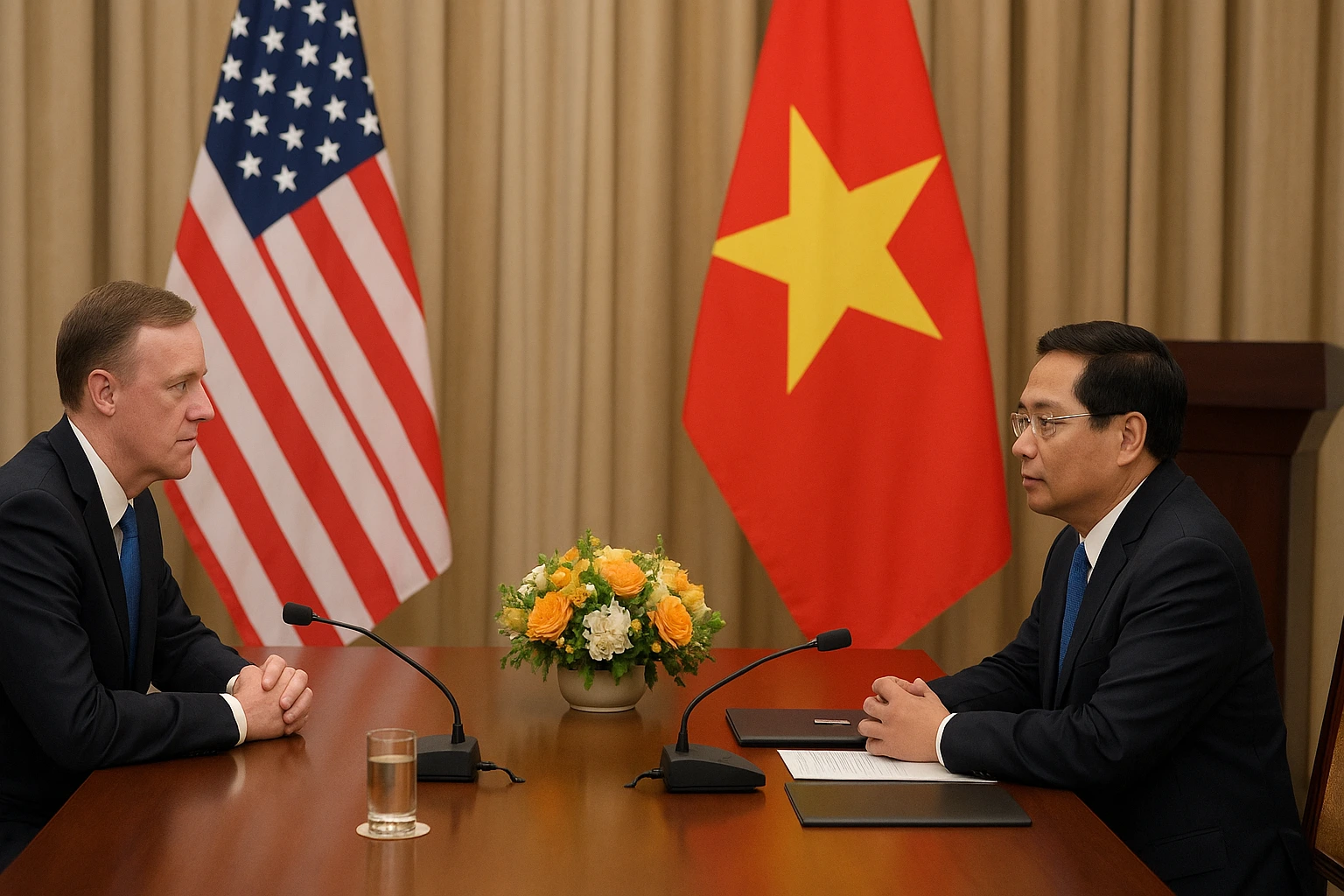WASHINGTON — The United States and Vietnam are moving toward finalizing a trade agreement that could reshape the economic relationship between the two nations, the White House said Sunday.
The deal, which is expected to be completed in the coming weeks, will set reciprocal tariffs ranging from zero to twenty percent and may remove some duties on Vietnamese exports to the US.
The agreement is designed to promote “reciprocal, fair, and balanced” trade, according to a joint statement released by both governments.
It marks another step in Washington’s broader effort to strengthen economic partnerships in Asia amid shifting global supply chains and trade realignments.
The US Vietnam relationship has deepened significantly in recent years, evolving from wartime adversaries to strategic partners. Vietnam, one of Southeast Asia’s fastest growing economies, has become a key manufacturing hub for American companies seeking to diversify away from China.
In July, US President Donald Trump announced tariffs of twenty percent on many Vietnamese products and forty percent on goods transvshipped through Vietnam from third countries.
The new framework retains the reciprocal twenty percent tariff but identifies categories where duties could drop to zero. Last year, Vietnam recorded a trade surplus of $123 billion with the United States, making it one of Washington’s largest trade partners in Asia.
The new deal is expected to provide greater access for American exporters, especially in sectors such as automobiles, medical devices, and pharmaceuticals.
Trade analysts view the agreement as a calculated effort by both nations to stabilize their economic partnership while addressing long standing issues around tariffs, market access, and intellectual property rights.
“Vietnam’s trade surplus with the US has been a point of contention, but this deal signals a shift toward mutual benefit rather than confrontation,” said Dr. Michael O’Hara, a senior trade policy expert at Georgetown University.
“It’s not just about tariffs it’s about aligning standards and building long term supply chain resilience.”
According to O’Hara, the inclusion of commitments on vehicle standards, pharmaceutical approvals, and intellectual property protection indicates that both sides are looking beyond short term trade numbers to a more sustainable framework.
Le Thi Huong, an economist at the Vietnam Institute for Economic Studies, said the agreement could boost investor confidence.
“The fact that the US recognizes Vietnam’s willingness to meet international standards will encourage more American businesses to enter our market,” she said. “This could help Vietnam attract higher value industries in the coming years.”
Trade between the two nations has surged over the past decade. According to the US Census Bureau, two way trade reached nearly $140 billion in 2024, up from $77 billion in 2019.
Vietnam is now America’s eighth largest trading partner and a critical player in electronics, textiles, and consumer goods. The US currently runs significant trade deficits with several Asian countries, but Vietnam’s surplus has drawn particular attention due to its rapid growth.
Reducing that imbalance without harming supply chains is seen as a key objective of the new agreement. Under the terms being finalized, both sides have pledged to address non tariff barriers.
Vietnam will accept vehicles built to US motor vehicle safety and emissions standards, ease import license restrictions for US medical devices, and streamline approvals for pharmaceuticals.
In return, Washington will consider tariff reductions on select Vietnamese goods, ranging from textiles to furniture and electronics. In Hanoi, business leaders expressed cautious optimism.
“If tariffs are lowered, it will be a game changer for small and medium enterprises in Vietnam that export to the US” said Nguyen Hoang Minh, owner of a furniture export company in Ho Chi Minh City.
“It’s been difficult to stay competitive with the current 20 percent duties.” American exporters are also watching closely. Linda Barrett, who runs a medical equipment firm in California, said the agreement could open long blocked doors.
“Vietnam is a fast growing market for US medical devices, but the approval process has been slow and unpredictable,” Barrett said. “If this deal simplifies that, it could double our exports within a year.”
Trade unions and domestic manufacturers, however, are urging caution. “We support fair trade, but the US must ensure that tariff reductions don’t lead to a flood of low cost imports,” said Paul Watkins, spokesperson for the American Manufacturing Coalition. “Enforcement mechanisms will be crucial.”
Both governments are now working to finalize and sign the Agreement on Reciprocal, Fair, and Balanced Trade. Once approved, it will undergo domestic legal procedures before coming into effect.
The White House said the deal would “provide both countries’ exporters unprecedented access to each other’s markets” and enhance cooperation on issues like duty evasion and export controls.
Experts believe the agreement could also serve as a template for future US trade arrangements in the Indo Pacific region. By promoting transparent standards and fair competition, it aligns with Washington’s broader goal of counterbalancing China’s economic influence in Southeast Asia.
“Vietnam stands at the crossroads of global manufacturing,” said O’Hara. “How it positions itself between major powers will define the next decade of Asian trade.”
As the United States and Vietnam move toward sealing their new trade pact, both nations appear intent on reshaping their economic partnership to reflect a more balanced, modern framework.
The agreement, once signed, is expected to ease market access, reduce tariffs on select goods, and strengthen cooperation on regulatory and intellectual property standards.
While challenges remain, the initiative marks a significant milestone in US Vietnam relations one rooted in mutual benefit, expanding trade, and the pursuit of resilient global supply chains.

